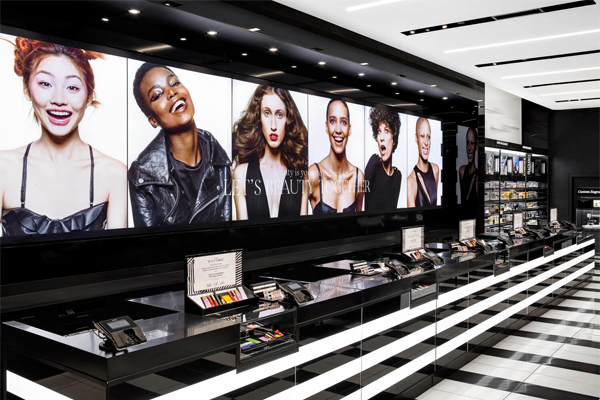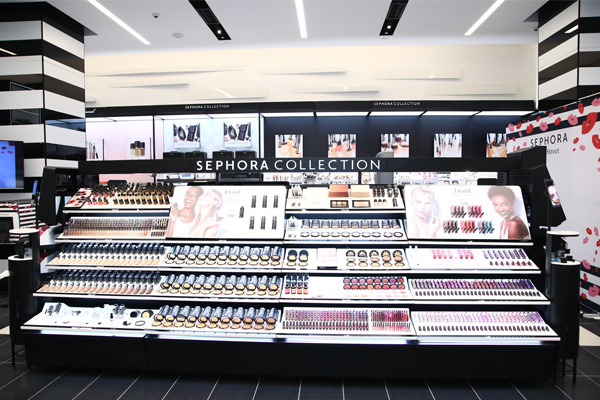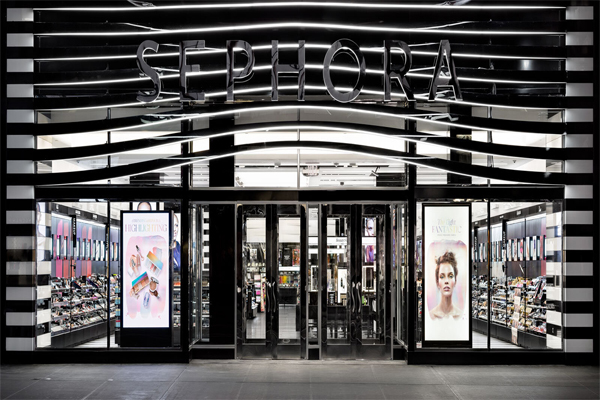Sephora’s latest research on racial bias in retail has revealed that two in five US shoppers have experienced unfair treatment on the basis of their race or skin tone.
The year-long study on the impact of racial bias on staff and customers, carried out by the international beauty retailer, revealed that Black shoppers are 2.5x more likely than White shoppers to receive unfair treatment based on their skin colour (44% versus 17%). Additionally, Black, Indigenous and People of Colour (BIPOC) shoppers are 2x more likely than White shoppers to receive unfair treatment based on their ethnicity (30% versus 15%).
It’s not just BIPOC shoppers that have experienced racial bias in retail. One in five retail staff reported experiencing unfair treatment based on their race at their place of work (20%) – either from customers or co-workers, according to the survey. As a result, one in three retail employees have contemplated quitting when they experienced racial bias and unfair treatment (31% for all employees; 37% for Black employees).
While the survey unveiled some harsh truths about racial bias in retail, it also provides the industry with invaluable insights necessary to improve the retail experience for both shoppers and customers from Black or ethnic backgrounds.
RACIAL BIAS IN RETAIL
The survey revealed that limited diversity in both marketing and results in “exclusionary treatment” even before shoppers enter a store, and continues across their in-store shopping experience. Three in four retail shoppers (74%) feel that marketing fails to showcase a diverse range of skin tones, body types and hair textures; while two in three (65%) think stores fail to deliver an equally-distributed assortment of products catering to different shoppers’ tastes and preferences. Moreover, nearly four in five retail shoppers (78%) don’t believe there is representation in brands or companies that are owned by and made for people of colour.
US BIPOC shoppers also feel that in-store interactions are driven by their skin colour, appearance and ethnicity; yet retail employees cite behavioural attributes, rather than appearance, as the basis for their interactions. BIPOC shoppers are also 3x more likely than White shoppers to feel most often judged by their skin colour and ethnicity (32% versus 9%). White shoppers, on the other hand, are more likely to cite factors like age (27% versus 12%) or attractiveness (13% versus 7%), as the primary basis of the treatment they face.

While shoppers feel they are being judged by their appearance, three in five (60%) retail employees cited behavioural attributes rather than physical attributes when determining how to approach or interact with shoppers. This gap in perception results in a “significant disconnect between how shoppers and employees interpret interactions in US retail”, according to the study.
MAKING SHOPPING MORE INCLUSIVE
While many customer needs are universal, BIPOC shoppers have differing requirements to help them feel welcome and a positive in-store experience, compared to White shoppers. This includes things like prompt greeting upon entering the store; offer of assistance shortly after entering the store; telling shoppers about new products, offers and services; and having store associates who “look like me”.
The survey also revealed that BIPOC shoppers turn to coping mechanisms, such as shopping online, to minimise or avoid an anticipated biased experience when in-store. The study provides clear areas where retailers can focus efforts to make the shopping experience more inclusive and welcoming “for all”.
MISSED OPPORTUNITIES
As the majority of shoppers do not voice concerns about negative experiences directly to retailers, brands miss out on vital feedback for improvement – as well as lost future sales and clientele – as shoppers take their business elsewhere. The report found that only 30% of shoppers reacted actively to unfair treatment as a means of providing feedback to the retailer, such as publishing an online review or social post about their experience; while fewer than one in five (15%) reported raising the issue with a manager or store supervisor. Even among those shoppers who did provide direct feedback, the majority (61%) were unsatisfied with the retailer’s response. This can have permanent and dire economic consequences for a retailer, with two in five BIPOC shoppers (43%) saying they are unlikely to visit any store location belonging to a retailer where they experienced mistreatment.
Both retail BIPOC employees and shoppers want to see long-term meaningful action from retailers to show their commitment to change through new programmes, training and tools designed to address these pervasive issues. But this is not often the reality for many retail shoppers who have experienced unfair treatment. In fact, BIPOC shoppers are 3x less likely than White shoppers to say a retailer addressed their experience with a change in store policy (34% versus 11%). And while the majority (81%) of retail employees recognise the importance of being able to service diverse shopper needs, fewer than one in three (27%) feel confident they can meet them extremely well; with many expressing a desire for more training and education to address these gaps.
INFLUENCING POSITIVE CHANGE
Commenting on the survey results, Jean-André Rougeot, President and CEO, Sephora Americas, stated: “At Sephora, diversity, equality and inclusion have been our core values since we launched a new kind of beauty retail destination in the US over 20 years ago. But the reality is that shoppers at Sephora, and in US retail more broadly, are not always treated fairly and consistently. We know that we’re in a strong position to influence positive changes in the retail industry and society at large and it’s our responsibility to step up. We’re committed to doing all we can to make our US retail experience more welcoming for everyone.”

“We’re proud of the work we’ve done thus far to make diversity, equity, and inclusion a priority for the company,” continued Rougeot. “We are stronger as a retail community when we are serving the needs of all of our shoppers, and hope other retailers will join us, with the ultimate goal of advancing inclusivity and improving the retail experience for all.”
ACTION PLAN TO MITIGATE BIAS
Alongside the results of the survey, the beauty retailer outlined its action plan and the changes it will implement across all of its US stores to mitigate racially biased experiences and unfair treatment for shoppers in the retail sector. Sephora’s plan includes increased diversity in its product offerings and workforce, more inclusive marketing programming, and greater accountability through the institution of updated employee conduct policies. To improve the range of products and experience for BIPOC shoppers, some of its new aims and initiatives include:
- Doubling its assortment of Black-owned brands by the end of 2021.
- Prominently feature and advertise Black-owned brands through a dedicated tab on the Sephora website.
- Implement new client feedback mechanisms to better identify incidents of bias, including those experienced by non-purchasers.
- Evolve the 2021 Accelerate brand incubator programme to focus exclusively on cultivating and growing BIPOC-owned and founded brands.

CREATING INCLUSIVE WORKPLACES
To create an inclusive workplaces for its staff and retain talent, some of Sephora’s new initiatives include:
- Update zero-tolerance policies that prohibit discrimination, harassment and other violations of our code of conduct to ensure clearer communication, expectation and enforcement of our policies for employees, including set outcomes if violated.
- Ensure 100% participation with foundational unconscious bias training for all new hires.
- Increase the frequency and depth of employee trainings, adding new modules that offer strategies to identify bias and exhibit inclusive behaviours in the workplace.
SHARING LEARNING ACROSS RETAIL
Rougeot admits that Sephora’s action plan, designed to tackle the issue of unfair treatment, “is a journey”, but one that the company is “committed to holding ourselves accountable to this mission for the benefit of our clients, our employees, our communities, and the retail industry at large”.
He wants to share its report learnings – and opportunities – with other retailers who may wish to enact systemic change within their own organisations. The beauty retailer also added that it will be partnering with leading trade and diversity organisations, such as Open to All, RILA and Diversity Best Practices to ensure dissemination to interested retail leaders.
Sephora is among a growing number of companies looking for ways to promote diversity and inclusion across its business. Apple and Southern Company also recently announced the launch of the Propel Center, an education campus in Atlanta aimed at training business leaders from diverse backgrounds, as reported.








































